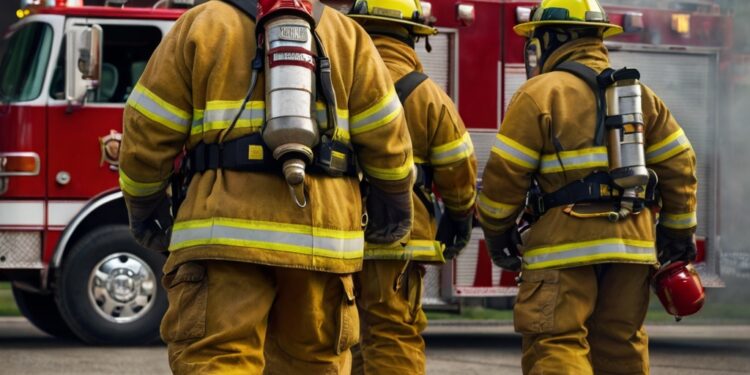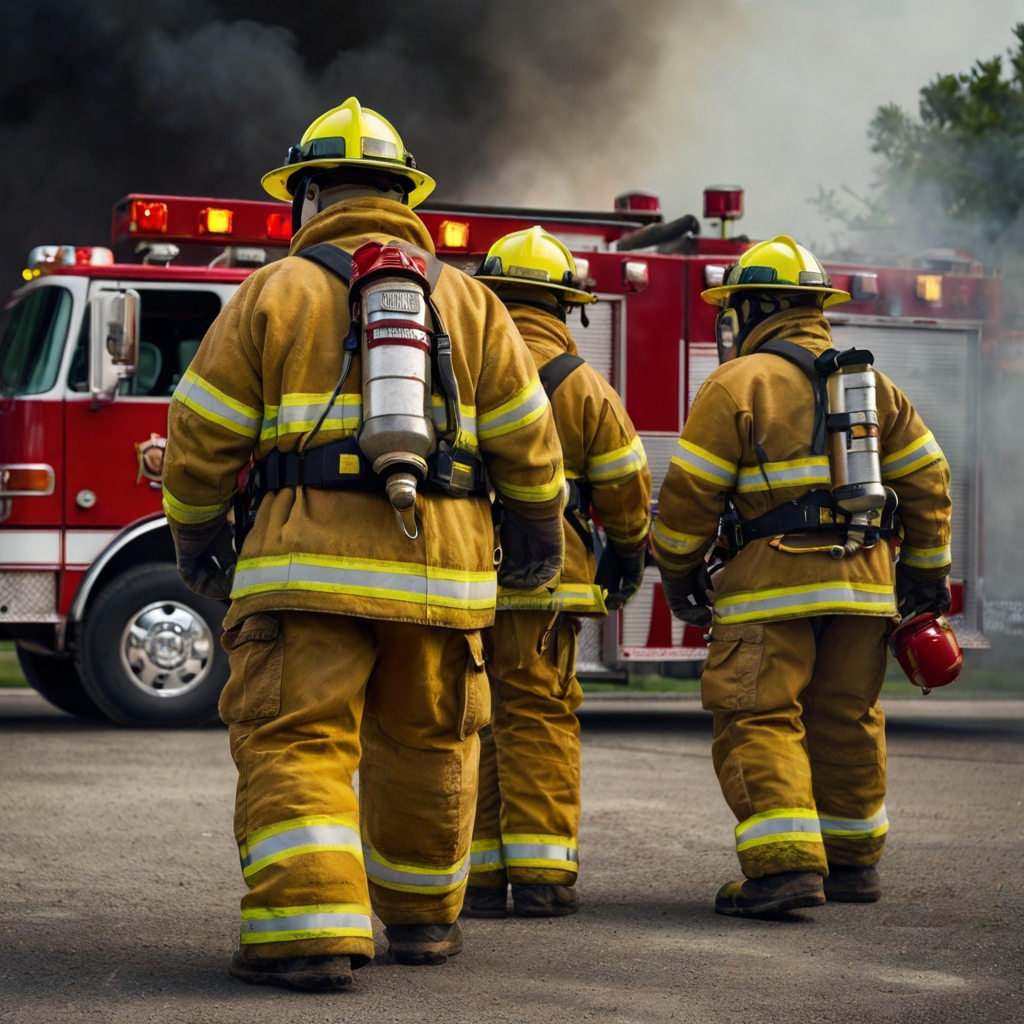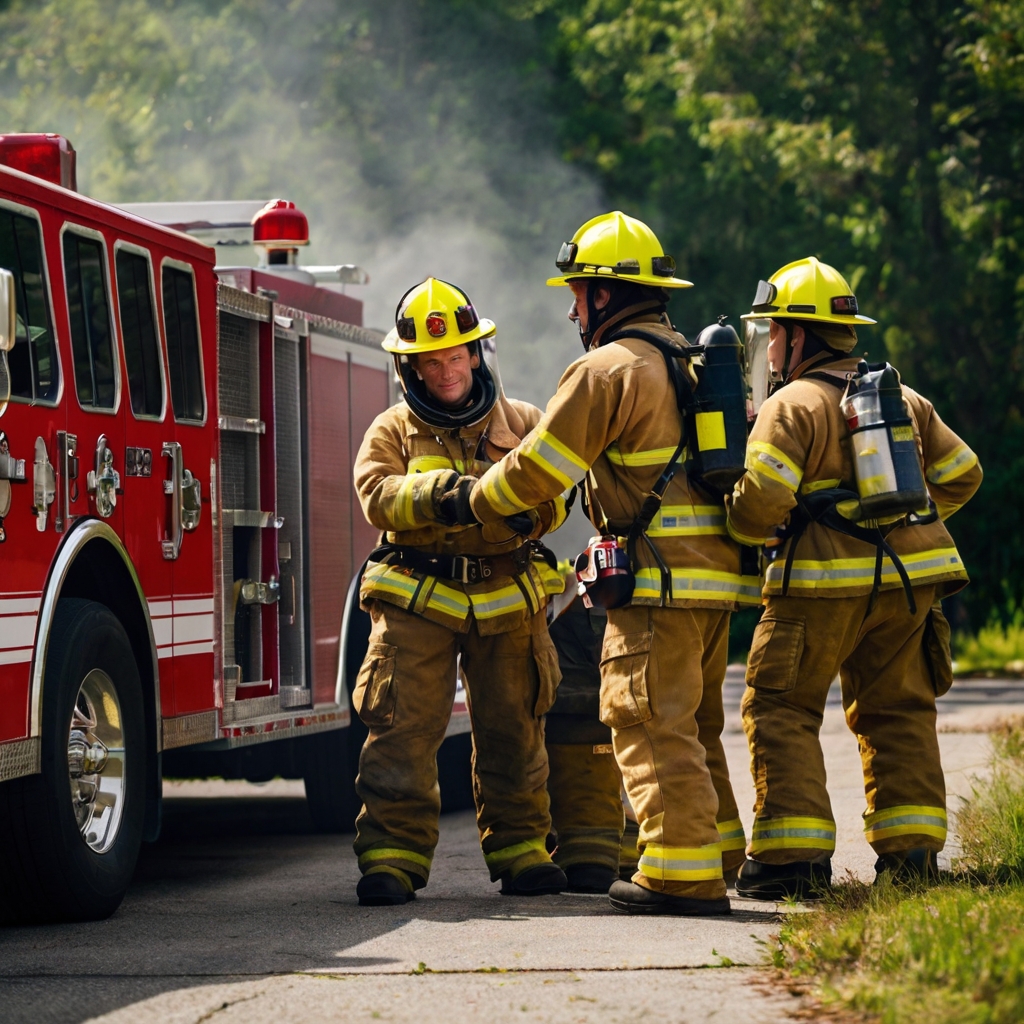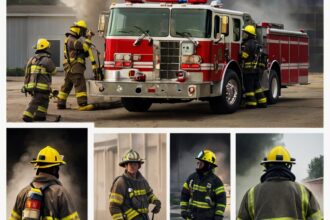How to Become a Volunteer Firefighter

America’s communities rely heavily on volunteer firefighters who protect over 70% of our neighborhoods. These brave men and women juggle their regular jobs and family responsibilities while staying ready to jump into action whenever duty calls.
People who want to join the ranks often ask about the path to becoming a volunteer firefighter. The journey requires meeting specific age criteria and physical fitness benchmarks. Local fire stations provide detailed training and certification programs that are available to anyone willing to commit.
This piece walks you through each step to become a volunteer firefighter. You’ll discover the qualifications needed, training requirements, and ways to find opportunities in your area. We’ll also cover everything from submitting your application to getting certified and building a rewarding career in volunteer firefighting.

Table of Contents
- 1 Understanding the Role of a Volunteer Firefighter
- 2 Essential Requirements and Qualifications
- 3 Steps to Join Your Local Fire Department
- 4 Training and Certification Process
- 5 Building a Successful Volunteer Career
- 6 Here are some FAQs about how to become a volunteer firefighter:
- 6.1 How do I become a local volunteer firefighter?
- 6.2 Do US volunteer firefighters get paid?
- 6.3 Do volunteer firefighters get paid in Texas?
- 6.4 How to become a volunteer firefighter in the UK?
- 6.5 Do volunteer firefighters get paid in SC?
- 6.6 How many firefighters died in 911?
- 6.7 What state pays firefighters the best?
- 6.8 Do volunteer firefighters get paid in Germany?
- 6.9 Who pays the most for firefighters?
- 6.10 Do UK volunteer firefighters get paid?
- 6.11 Who was the oldest firefighter killed on 9 11?
- 6.12 What does FDNY stand for?
- 6.13 How many heroes died in 9/11?
Understanding the Role of a Volunteer Firefighter
Volunteer firefighters show steadfast dedication, courage, and strong community spirit. They perform vital emergency response duties while balancing their regular careers and personal lives.
Key responsibilities and duties
Volunteer firefighters handle emergencies of all types, not just fires. Their core responsibilities include:
- Fire suppression and prevention
- Emergency medical response
- Hazardous materials handling
- Search and rescue operations
- Equipment maintenance and inspection
- Public education and community outreach
These dedicated first responders help their communities save an estimated $46.90 billion each year through their service. They inspect and maintain firefighting equipment, attend regular training sessions, and respond to emergencies from structure fires to medical incidents.
Time commitment expectations
Each department sets different time requirements based on community needs. Most departments ask volunteers to complete 80 hours of training annually and respond to at least 50% of calls during their available hours. Some volunteers work specific shifts, while others stay ready to respond anytime.
Initial Training Period: New volunteers have 18 months to earn their basic certifications. This intense period requires dedication to learn essential skills and obtain required certifications.
Physical and mental demands
Physical challenges come with the role. Firefighters must exert up to 100 pounds of force during emergency operations. The job involves climbing, balancing, stooping, and carrying heavy equipment while wearing 35-pound protective gear.
Mental toughness plays an equally vital role. Volunteer firefighters face emotional challenges and must stay calm under extreme pressure. They show higher rates of mental health symptoms than career firefighters, including increased risks of:
- Post-traumatic stress disorder
- Depression
- Anxiety
- Burnout
Heart disease remains the leading cause of line-of-duty deaths among firefighters. This statistic highlights the job’s intense physical demands. Departments stress the importance of staying in top physical shape through regular exercise and health monitoring. These practices help firefighters perform their duties safely.
Essential Requirements and Qualifications
Fire departments across the country set strict standards when accepting volunteer firefighters. Public and firefighter safety depends on meeting these significant requirements before serving the community.
Age and education prerequisites
Volunteer firefighters must meet simple eligibility criteria to join a department. Candidates should be at least 18 years old, though some departments’ junior firefighter programs welcome younger participants. A high school diploma or GED equivalent stands as the standard educational requirement.
Additional Simple Requirements:
- Valid driver’s license with a clean driving record
- Proof of residency within the department’s service area
- Knowing how to respond to emergency calls within specified time frames
Physical fitness standards
Firefighting’s physical demands require strict fitness requirements. The National Fire Protection Association (NFPA) 1582 standards guide departments to conduct annual physical examinations and fitness assessments. These assessments include:
- Aerobic capacity testing
- Muscular strength assessment
- Body composition measurement
- Flexibility evaluation
Medical monitoring becomes vital since 54% of firefighter deaths stem from overexertion and stress. Blood analysis, pulmonary function tests, and cancer screenings make up the annual health screenings.
Background check requirements
Fire departments run thorough background investigations to ensure their volunteer firefighters’ integrity and reliability. The screening process involves:
Criminal History Review: Candidates must pass complete background checks. These offenses lead to automatic disqualification:
- Arson-related crimes
- Violent offenses
- Recent DUI convictions
Drug testing plays a key role in screening, and departments enforce zero tolerance for injectable drug use. Some departments review credit history as part of their investigation process.
Minor infractions often receive flexibility from departments that value honest disclosure during applications over perfect records. Requirements and screening processes vary between departments, yet these core standards help volunteers serve their communities safely and effectively.
Steps to Join Your Local Fire Department
Starting your journey as a volunteer firefighter begins when you know where to look and how to approach local departments. Volunteer emergency responders make up 73% of the fire service across the US. Fire departments welcome new members to join their ranks.
Finding volunteer opportunities
Start by researching nearby fire departments through online directories or state fire associations. Most departments welcome interested people to visit their stations during non-emergency hours. You can learn about available positions this way. Departments give you options like support volunteer, emergency medical responder, and firefighter positions. This lets you pick a role matching your skills and schedule.
Application process overview
The application process usually takes 1-3 months. You’ll need to submit these documents:
- Completed application form
- Valid driver’s license
- Proof of residency
- Medical examination results
- Background check authorization
- References
Departments review applications in 4-6 weeks. Candidates should get ready for next steps and stay in touch with their chosen department.
Initial screening and interviews
Background checks, medical examinations, and interviews with department leadership make up the screening process. Here’s what you should prepare for your interviews:
- Department Knowledge: Learn about the department’s history and current operations
- Time Management: Show how you’ll balance volunteering with other commitments
- Physical Preparedness: Show you understand fitness requirements
- Emergency Scenarios: Be ready to talk about handling various situations
- Team Dynamics: Share examples of your teamwork experiences
Department leaders look at your communication skills, problem-solving abilities, and dedication level during interviews. They’ll ask why you want to volunteer and if you understand the time requirements. You typically need to respond to 15% of calls and join two drills monthly.
Candidates who pass move on to training. The department gives you professional equipment and complete instruction so you can serve safely and effectively. This approach helps departments keep high standards while welcoming dedicated people into their firefighting family.
Training and Certification Process
Getting certified as a volunteer firefighter requires complete training programs that ensure safety and competence during emergencies. Each state and department has different training requirements, but they all follow national standards for firefighter qualification.
Basic firefighter training programs
New volunteers must complete a 428-hour basic firefighter training program. This program combines classroom instruction with practical skills development. The training curriculum has:
- Fire suppression techniques
- Building construction knowledge
- Fire dynamics understanding
- Personal protective equipment use
- Communication protocols
- Hazardous materials handling
Volunteers need to get their Firefighter I certification within 24 months of joining. The certification process needs both written and practical examinations, and candidates must score at least 70% to pass.
Emergency medical certification requirements
Emergency medical training is a vital part of firefighter preparation. Volunteers need about 100 hours of EMT training that includes:
- Classroom instruction
- Hands-on training
- Emergency simulations
- CPR certification
Departments often provide free EMT training to candidates who agree to serve for a specific time. Candidates must pass cognitive and psychomotor examinations from the National Registry of Emergency Medical Technicians before getting certified.
Ongoing education and skill development
A volunteer firefighter’s service requires continuous learning. Weekly training sessions help maintain and improve skills. The National Volunteer Fire Council provides several educational opportunities, including:
Virtual Training: Online platforms offer advanced courses on specialized topics. These programs count toward continuing education units and cover training in traffic incident management, electric vehicle response, and hazardous materials handling.
In-Person Development: Regular drills focus on core skills and new techniques. Training officers create programs based on local hazards, incident trends, and after-action reviews. Regional training centers give volunteers extra opportunities to earn specialized certifications in areas like wildland firefighting and technical rescue.
The training process focuses on individual growth and team coordination. Departments usually stick to a fixed training schedule. This helps volunteers balance their commitments, with sessions offered at different times to work around various schedules.

Building a Successful Volunteer Career
Success in the volunteer fire service goes way beyond your original training and certification. A rewarding career needs dedication to professional growth, strong relationships, and continuous learning.
Networking within the department
Strong professional connections are the foundation of a successful volunteer firefighting career. The International Association of Fire Chiefs highlights how networking helps firefighters build important connections in the fire community. Effective networking involves:
- Attending professional conferences and workshops
- Participating in department social events
- Joining professional associations
- Contributing to community outreach programs
- Building relationships with experienced members
Studies show that all but one of these fire departments in the United States operate with volunteers completely or mostly. This creates amazing opportunities to build meaningful connections. Successful networking needs regular contact with colleagues while being careful not to overburden relationships.
Advanced training opportunities
The National Volunteer Fire Council gives extensive advanced training options through their Virtual Classroom. Their specialized programs cover hazardous materials handling and emergency response. These programs help volunteers improve their skills while keeping their regular careers.
Training opportunities include:
- Hazmat train-the-trainer programs
- Live online training sessions
- In-person workshops
- Regional conferences
- Specialized certification courses
The NVFC’s Virtual Classroom gives access to over 10 carefully designed courses taught by leading subject matter experts. Students typically complete these programs in 10 hours and receive certificates afterward.
Leadership development paths
Leadership development in volunteer fire departments builds strong decision-making abilities and management skills. The NVFC released a detailed Leadership Track designed specifically for fire and EMS department leaders. This program gives emergency service leaders the skills needed to deepen their leadership abilities and effectiveness.
Strong leadership development includes understanding several responsibilities:
- Recruiting and managing personnel
- Budgeting and administration
- Community relations
- Setting cultural and ethical standards
- Strategic planning and resource allocation
Research shows that effective leadership plays a crucial role in engaging and retaining volunteers through training programs. Leaders must be role models who prepare their fire officers for future promotions while encouraging a culture of continuous learning.
Department chiefs ensure their core team has the tools and knowledge to accomplish their mission. This creates an environment where volunteers grow professionally while maintaining their commitment to community service. Through transformational leadership, departments help members develop within the organization. This makes them feel valued rather than like outsiders.
The path to leadership starts with building strong relationships within the fire company. New fire officers need more than skills and experience to succeed. They must create reliable connections within the department. Experienced captains and chief officers mentor promising volunteers and prepare them for advancement opportunities.
Volunteer firefighting is one of the most meaningful ways to serve local communities. This role just needs dedication, physical fitness, and continuous learning. It provides an unmatched chance to grow both personally and professionally. Successful volunteer firefighters can balance their careers with emergency response duties. They build valuable skills through complete training programs and leadership opportunities.
The fire service is perfect if you have the drive to face challenges and welcome rewards. Local departments support their team members through training, mentorship, and professional development programs. The path might look tough at first. Yet people who meet the simple qualifications, get their certifications, and stay committed to learning become part of a proud tradition. This legacy of community service spans generations.
Thousands of volunteer firefighters protect their communities each year. They create lifelong friendships and gain valuable skills along the way. Their work saves billions of dollars annually and countless lives. The local fire department welcomes questions about available positions. Taking that first step could lead you to join these essential community guardians.
Here are some FAQs about how to become a volunteer firefighter:
How do I become a local volunteer firefighter?
To learn how to become a volunteer firefighter, start by contacting your local fire department to inquire about their requirements and application process. Many departments require you to complete an application, pass a background check, and undergo training. Check for “how to become a volunteer firefighter near me” resources to find opportunities specific to your area.
Do US volunteer firefighters get paid?
Most US volunteer firefighters do not receive regular pay, but some may receive small stipends or reimbursements for expenses. The focus is on serving the community rather than financial compensation. Understanding how hard it is to become a volunteer firefighter depends on the training and time commitment required.
Do volunteer firefighters get paid in Texas?
Volunteer firefighters in Texas typically do not get paid, although some departments may offer stipends or reimbursements. The requirements to be a volunteer firefighter in Texas vary by department, but most include training and certification.
How to become a volunteer firefighter in the UK?
In the UK, to become a volunteer firefighter, known as a retained firefighter, you need to live or work near a fire station and meet specific requirements. The process involves an application, medical and fitness tests, and training. For guidance, look up “how to become a volunteer firefighter near me” in the UK.
Do volunteer firefighters get paid in SC?
In South Carolina, volunteer firefighters generally do not receive a salary but may qualify for stipends or tax benefits. The process for how to become a volunteer firefighter includes training, medical clearance, and meeting local department requirements.
How many firefighters died in 911?
A total of 343 firefighters tragically lost their lives during the 9/11 attacks while heroically trying to save others. These events highlight the bravery and dedication of firefighters, whether paid or volunteer.
What state pays firefighters the best?
California is known to pay firefighters the best, with competitive salaries and benefits due to the high demand for firefighting in wildfire-prone areas. While volunteer firefighters in California often work unpaid, some departments may offer stipends.
Do volunteer firefighters get paid in Germany?
Volunteer firefighters in Germany, known as “Freiwillige Feuerwehr,” do not receive regular pay but may be compensated for expenses or receive tax incentives. The requirements to be a volunteer firefighter in Germany often include mandatory training programs.
Who pays the most for firefighters?
Firefighters in California, New York, and Washington generally receive the highest pay, reflecting the demand and cost of living in these areas. How hard it is to become a volunteer firefighter depends on the training and qualifications needed in each state.
Do UK volunteer firefighters get paid?
Volunteer firefighters in the UK typically receive a small retainer fee and payment for callouts. They are not fully salaried but receive compensation for their commitment. Requirements to be a volunteer firefighter in the UK include fitness, training, and proximity to a fire station.
Who was the oldest firefighter killed on 9 11?
The oldest firefighter killed on 9/11 was Chief Ray Downey, a decorated veteran and leader in the FDNY, who was 63 years old. His contributions to rescue operations were legendary and deeply respected.
What does FDNY stand for?
FDNY stands for the Fire Department of the City of New York. It is one of the largest and most respected firefighting organizations in the world, known for its service and sacrifice during events like 9/11.
How many heroes died in 9/11?
On 9/11, a total of 412 emergency workers, including 343 firefighters, lost their lives while rescuing others. Their sacrifice is honored worldwide as a testament to their bravery.

